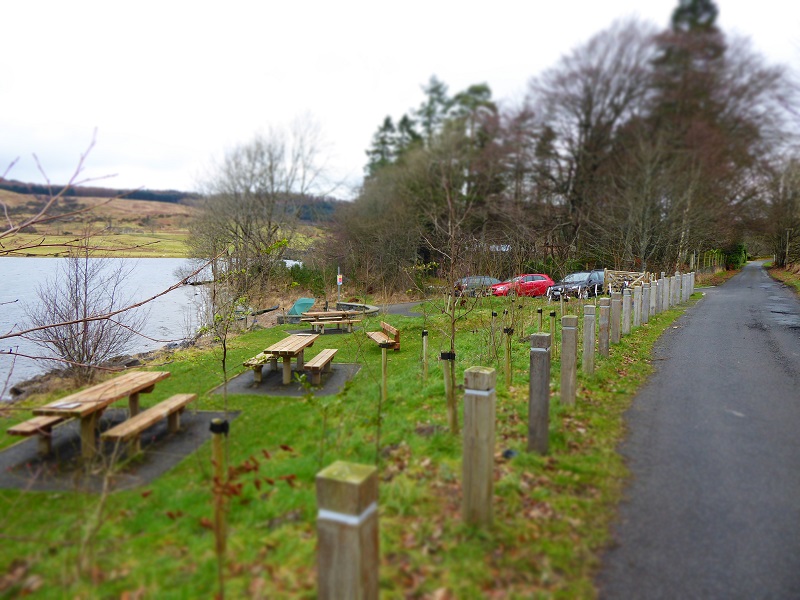
On Sunday, I was reminded of Oscar Wilde’s story of the selfish giant. The story is about a giant who returns to his castle, finds children playing in his garden and infuriated, builds a wall to keep them out but then the hard way learns the error of his ways. Its a parable about many things, but access and sharing land is at the heart of it. For readers who don’t know it, its a recommended read (5 minutes – see http://www.online-literature.com/wilde/180/).
I had gone to the Trossachs to check a couple of hydro schemes (about which more anon) but first of all wanted to check some details about the land around Loch Venachar House, the home of Linda McKay, the soon to depart convener of the National Park. She appears to have been the driving force behind the forthcoming camping byelaws (see here). I stopped at the carpark at the Quay on the Invertrossachs Rd, which the Loch Lomond and Trossachs National Park upgraded in 2015. Parkswatch has previously covered how the Loch Lomond and National Park Authority had changed some of the original plans for this site (see here for the cock and bull stories about why gates were installed) as set out in the Five Lochs Visitor Management Plan in 2012. What I had not appreciated till last week was that the Park had applied for planning permission to itself for re-landscaping this car park and planning documents were also available:
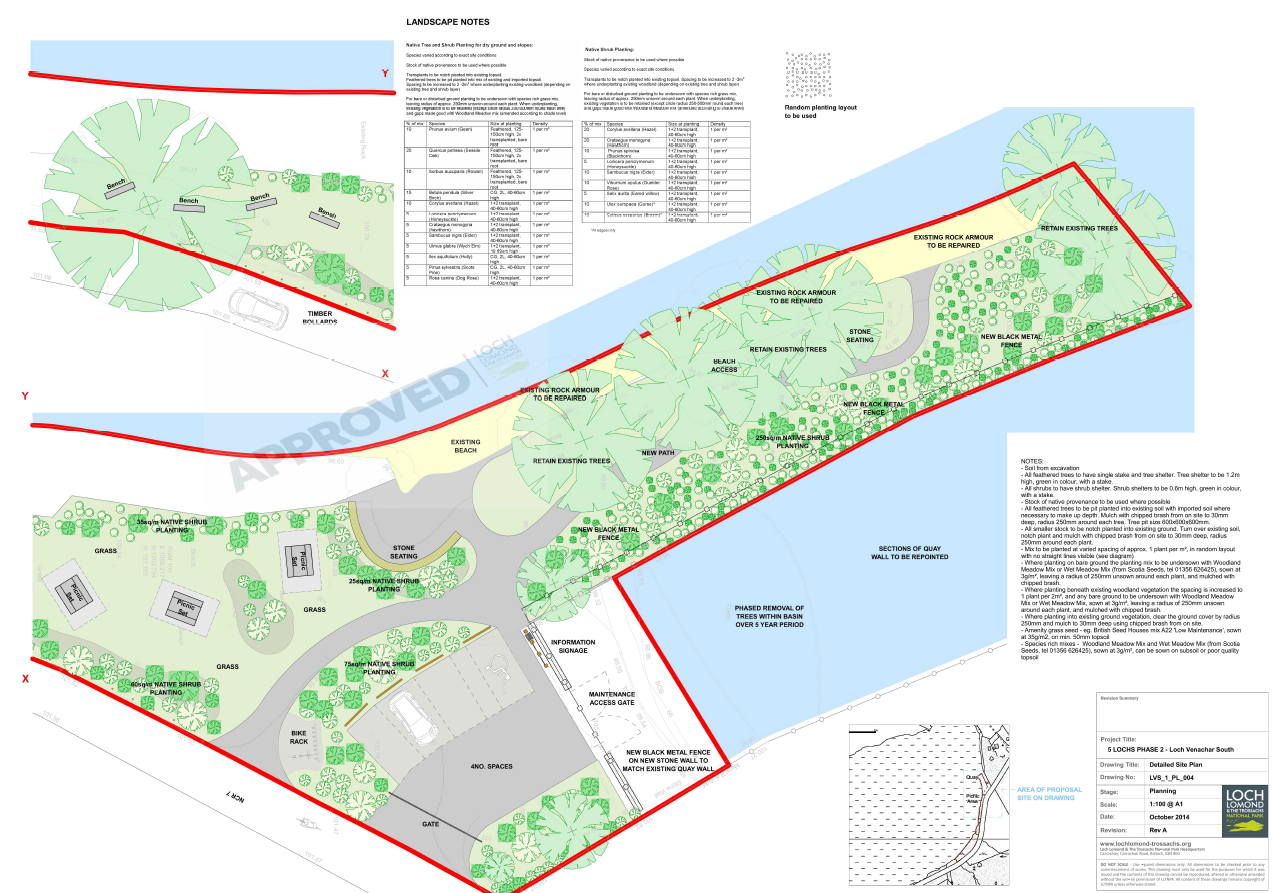
 In the original Five Lochs Visitor Management Plan, the area to the right of the gate which is directly adjacent to the grounds of Loch Venachar House, Linda McKay’s House, was to be grassed. On the planning application the grass was replaced by trees. You can see from the photo that many are of prickly variety and sit in front of a full height barbed wire fence. The objective would appear to be the prevention of any public access along the shoreline towards the old water works. Why the LLTNPA should be so determined to curtail public access here remains obscure.
In the original Five Lochs Visitor Management Plan, the area to the right of the gate which is directly adjacent to the grounds of Loch Venachar House, Linda McKay’s House, was to be grassed. On the planning application the grass was replaced by trees. You can see from the photo that many are of prickly variety and sit in front of a full height barbed wire fence. The objective would appear to be the prevention of any public access along the shoreline towards the old water works. Why the LLTNPA should be so determined to curtail public access here remains obscure.
While the landscaping in the foreground of the photo at the top accords with the plan granted planning permission, the path along the quay has totally disappeared and been replaced by closely planted trees making access very difficult. Again, it would be in the public interest to know why it was decided to do this.
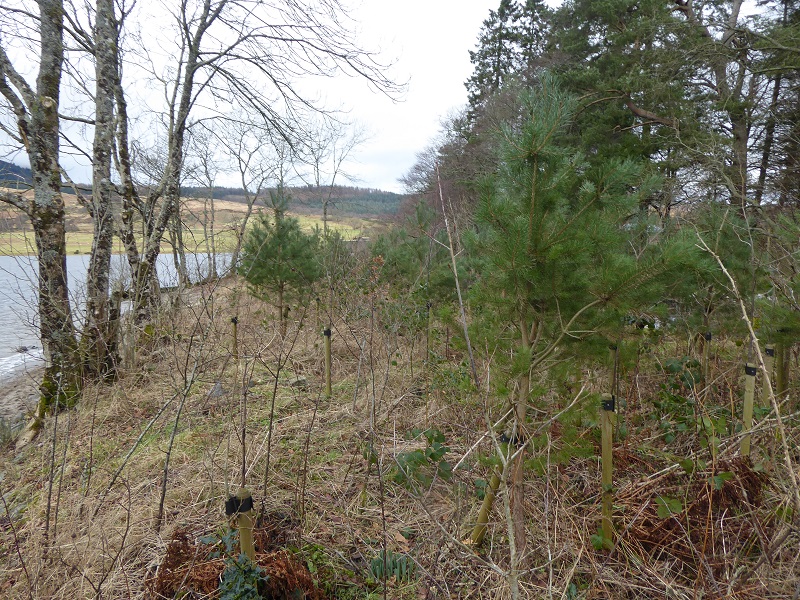
The land at the Quay was gifted to the people of Callander on 7th August 1909 as part of a deal in which a builder, John Watherston, bought the lands of Easter Duilater (now known as Dullater) from the McLaren Educational Trust. The original deeds from the Register of Sasines state that the purpose of the gift was for local people “to enjoy the rights and privileges of fishing and boating in Loch Venachar……together with the right of access to Loch Venachar for these purposes”. Over the years the land was managed on behalf of the people of Callander, first by the McLaren Educational Trust, then Callander Borough Council before being transferred to Stirling Council and thence to the Loch Lomond and Trossachs National Park Authority on 22nd September 2004 (along with other parcels of land on the north side of Loch Venachar, Rowardennan, Milarrochy Bay and some other places).
While the quay had fallen into disrepair, one might have thought a National Park would have wanted to respect the terms of the original gift. Not so – the LLTNPA has now effectively stopped anyone from launching boats from the quay while the dense treeplanting discourages anyone from walking out to the end of the Quay and enjoying the view along the shoreline to the dam and waterworks, a fine piece of Victorian architecture.
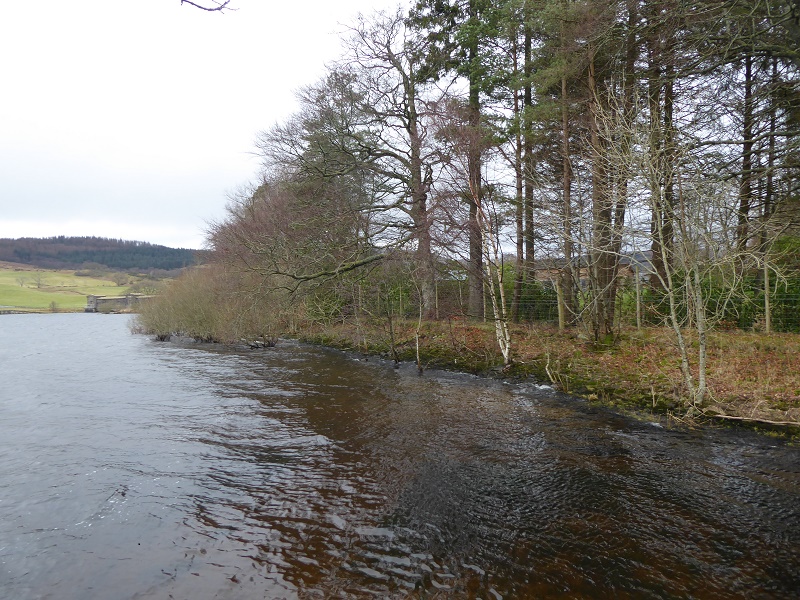
This landscaping appears to contravene one of the four statutory aims which is to promote enjoyment of the countryside. An artificial quay built into a loch is not the sort of place that would normally be planted or where tree regeneration would be promoted. I have written to the LLTNPA asking for them to explain why the path has been replaced by a barrier of trees and the basis for this decision.
One might have hoped that with the Convener of the LLTNPA, Linda McKay living next door, she would have taken a close interest in the need for the Park to demonstrate best practice here and intervened to prevent this measure. On the contrary, I have – despite asking – seen no evidence that she made any written representations on the Park’s development of the Quay site.
The main thing I wanted to check on my visit though was access along the boundaries of Loch Venachar House. Last summer I had seen a barrier between the high fence, which I suspected marked the property boundary, and a lower fence that runs along the edge of the quay. It was still there:
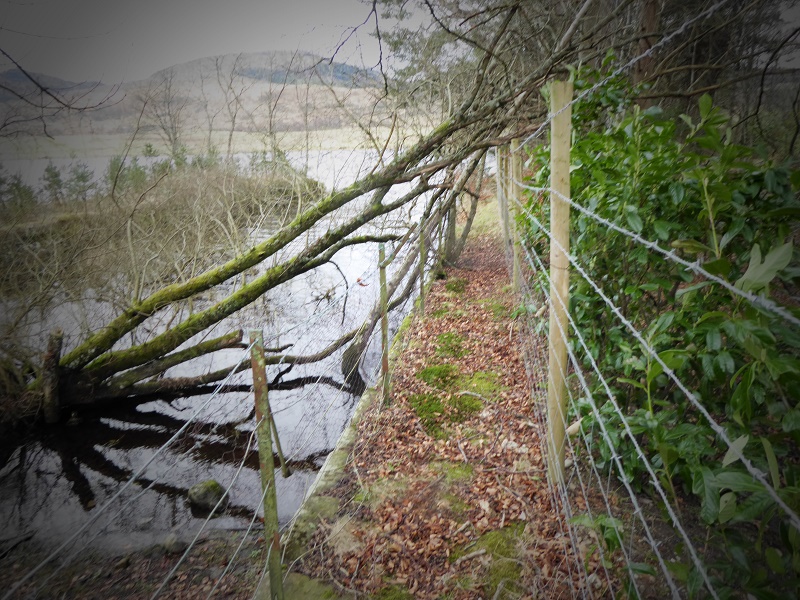 The wire is very hard to see from a distance (you can see a faint haze across between the fences if you look carefully) and its only if you tried walking between the fences that you would realise it was there:
The wire is very hard to see from a distance (you can see a faint haze across between the fences if you look carefully) and its only if you tried walking between the fences that you would realise it was there:
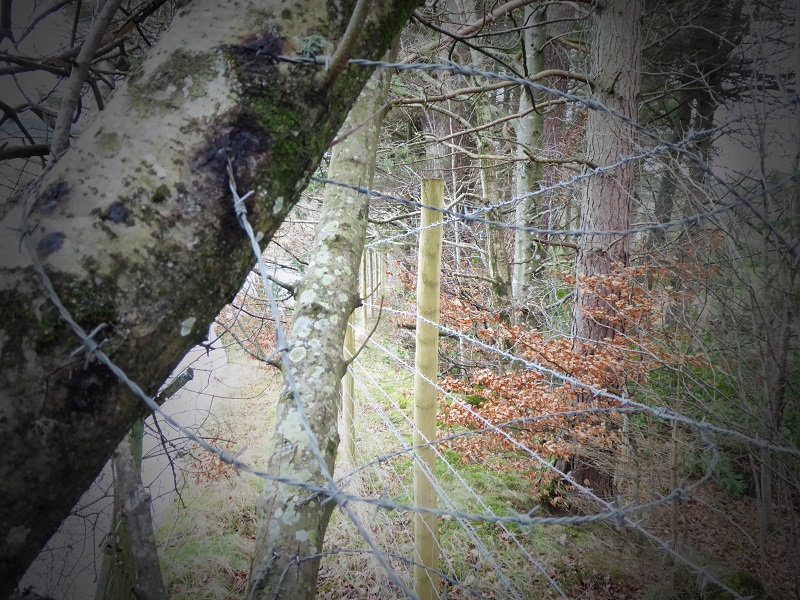
Close up though the barbed wire and wire netting below it form a very effective barrier with no way round without wading through the Loch. I have no idea of who has done this. It appears though to be fairly recent from the way the barbed wire is wrapped round the fence wire, i.e it post dates that, and whoever did this appears to care little for trees. Nor do I know who owns the land outside the fence. This could form part of the Venachar House property or could be owned by someone else, such as by Scottish Water – or it could form part of the harbour and quay and be owned by the National Park itself (I was not able to find the diagram of the land originally gifted from the Register of Sasines).
What I did learn on Sunday though, from a man fishing with his son, is that people used to walk around the shoreline of the loch here to the dam during the long period when the former Venachar House was derelict. The intention of the new wire is clearly to stop people doing this and because its outside the fence that marks the garden boundary, whatever the ownership, it appears to be an obstruction to access, possibly on land owned by the LLTNPA. Interestingly, the man fishing – who turned out to be a police officer in his day job – also told me that when the reservoir is low you can still walk round to the dam along the beach. LLTNPA photos from the Your Park consultation prove that people used to camp on the beach along the shoreline by the Invertrossachs Rd and perhaps they also used to camp on the beach in front of what is now Loch Venachar House.
After checking the Quay side of the shoreline and being unable to get further, I walked round Linda McKay’s house then took the track to the dam.
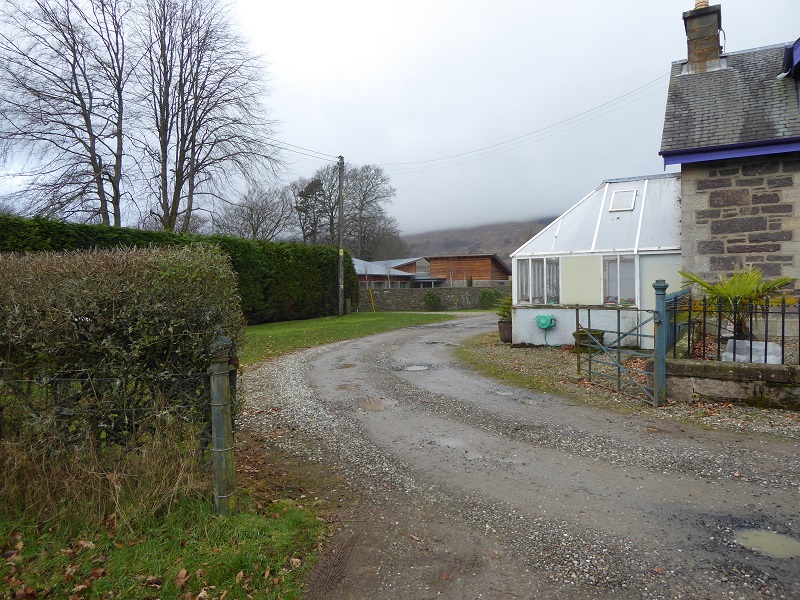
The access is not welcoming, there are no signs making walkers welcome however, I knew the track was used by Scottish Water to access the dam and the last time I had visited, a woman from the house to the right of the track gave me a friendly wave as I walked past.
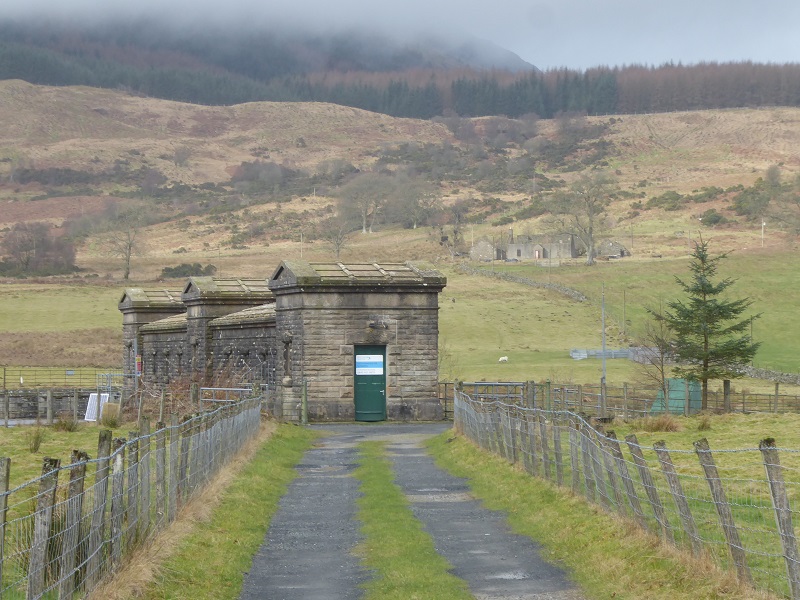
At the dam I tried walking back towards the Quay along the lochside, but this was soon blocked by vegetation, so I walked through the open field (to left of picture), climbed over a wire fence and then realised by a short section of wooden fence between the fence and the shore that if I went further I could be in what is now Linda McKay’s garden. I turned round.
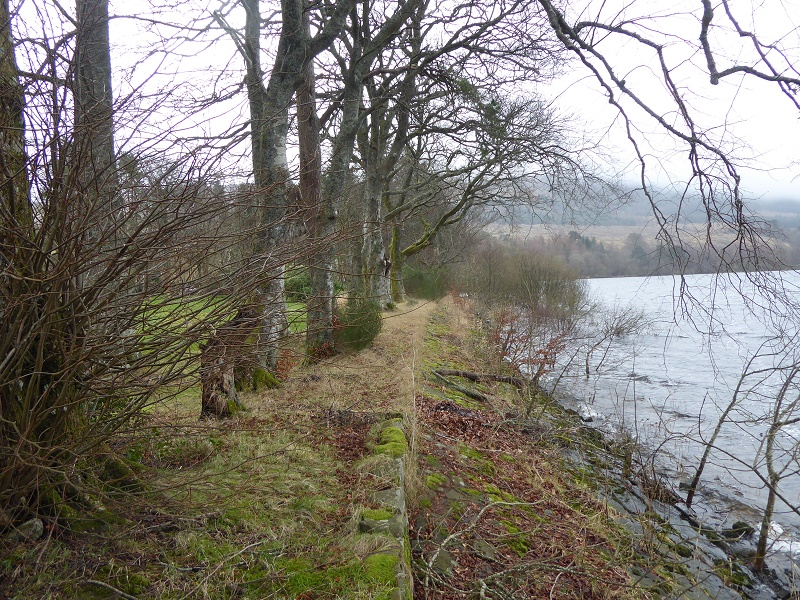
I don’t know as yet whether the shoreline here forms part of the property of Loch Venachar House or whether the wall or line of trees in the photo forms the boundary and, if so, who owns the land outside the boundary, including the sloping embankment down to the reservoir. If the wall or lines of trees forms the boundary, the land outside of this would still be within access rights. However, because there is no information and because no-one wants to walk into what is legally someone’s garden, what this would effectively mean is that the owners of Loch Venachar House have secured part of the shoreline for their own private use. I turned back because of this. If the owners had continued with the boundary fence, as they have every right to do, this would indicate to the public that the land outside the fence was within access rights but would have blocked Linda McKay’s access to the shore.
If the entire shoreline now forms part of the Loch Venachar House property, since its been effectively treated as being part of the garden, then access rights would no longer apply. If that is the case, this is a land reform issue – how do we protect land that is important for recreation from being bought up for exclusive private use?
I live in Glasgow, am lucky enough to live in a nice house on a fairly quiet residential street and on an average day several hundred people walk within metres of my front door. If people, whether children or drunks step onto the property I happen to own, I tolerate it and sometimes welcome it. In this respect I am no different to many thousands of other city dwellers. I know there are though some people who live in the countryside or very large houses who feel differently. They become so hooked on their own privacy or right to enjoy the land that they try and put barriers around their property, like the selfish giant.
One of the significant things that have changed for the better as a result of our access legislation in 2003 has been the whole culture of access among the general population (if not among public officials). Many people who live in the countryside have become far more relaxed about access and have come to realise that people visiting and walking close to where they live are not a threat but a positive thing. There are now walkers welcome signs all over Scotland. Views have changed, like those of the Selfish Giant, but on a mass scale. This is something that Scotland can and should be very proud of, one of the greatest achievements of the Scottish Parliament.
Unfortunately there are still some people who have not seen the light, who, like the selfish giant, remain shut up in their properties. While Linda McKay appears to have done nothing illegal, my investigations have re-inforced what I thought the first time I saw how she had fenced her house and how the National Park had blocked off access at the Quay. Neither she, nor the National Park staff who changed the landscaping design at the Quay, appear to be to be among those people who understand or appreciate the importance of access. Such people have a right to their views but should not be holding positions of power in a National Park which has a legal duty to promote access to the countryside and that they do is a matter that should be of the greatest concern.
What needs to happen
We need to learn from what has gone wrong in the Loch Lomond and Trossachs National Park Authority. A key lesson for the Scottish Government is to avoid in future the appointment of anyone to a National Park Board who appears to have strong private interests which conflict with the protection and promotion of access rights. I think that should require that at Board Interviews, people who own land should be asked to demonstrate how their management of land is in sympathy with the National Park’s objectives. This should include not just access but also conservation and sustainable use. If people cannot demonstrate this in their own ownership of land they should not be appointed (that would also rule out any landowners who had in any way tolerated raptor persecution or flouted planning permission from serving on National Park Boards)
At Loch Venachar, public access should be restored from the quay to the dam area along the shoreline linking to the path alongside the river beyond. The dam is a listed building, a great place to visit and it could form part of a path network linking Gartchonzie with the Invertrossachs Rd, a distance of c1.5k. Walking along river and lochside would be immeasurably superior experience to walking along the Invertrossachs Rd, which is currently marked as a core path. If that requires the LLTNPA to purchase of a strip of land on the edge of Linda McKay’s property then they should do this, as soon as possible, using their compulsory purchase powers, if necessary.
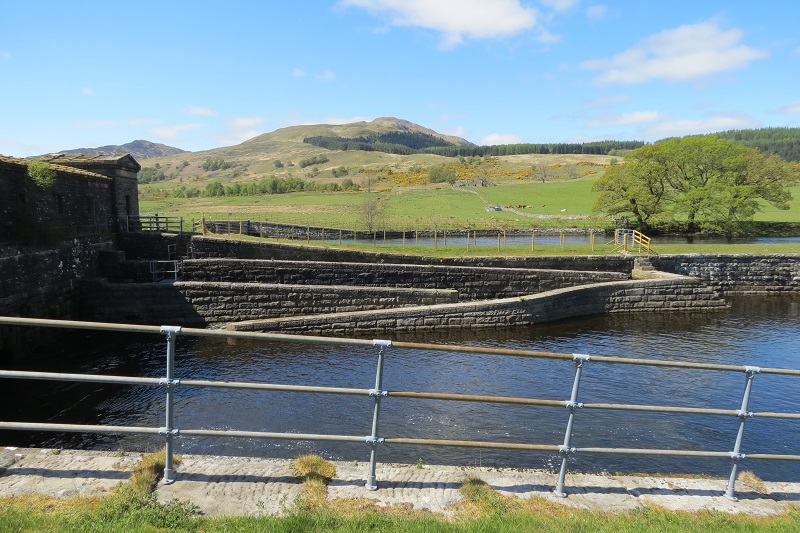

This utterly beggars belief.
I’m not buying the fact that the convenor of the LLTNPA didn’t know the results of a redevelopment at the end of her own garden. This is plain and simply abuse of a public position.
I can feel a formal complaint coming on.
This does need a deeper look and more publicity
More than a year on only difference more signs gates on car parks
The likes of such manipulative sub humans will be aware of potential public buy outs and the snake in them will react as such but hopefully one day snake gets to greedy and chokes
Time to re evaluate this one John watherston would be turning in his grave, planting trees on a gift to the people of Callander .Who now in their right mind would build anything for the people if it’s to be deliberately destroyed so some one has nice quiet view very like the nasty giant